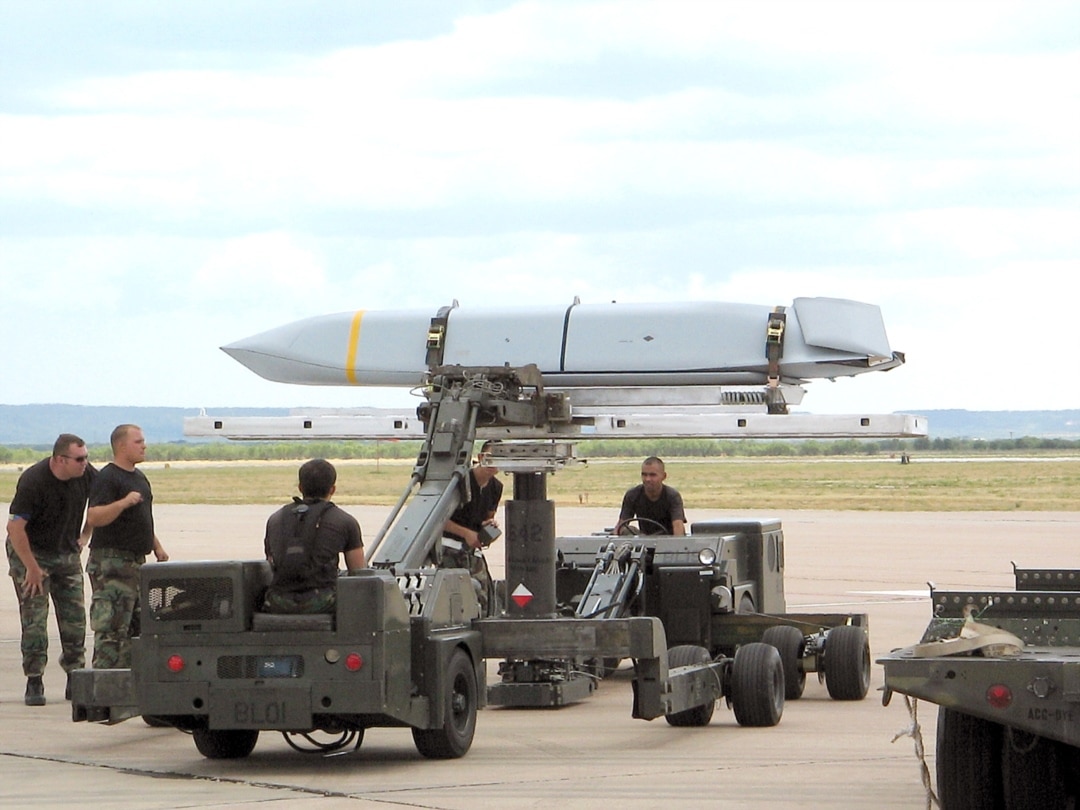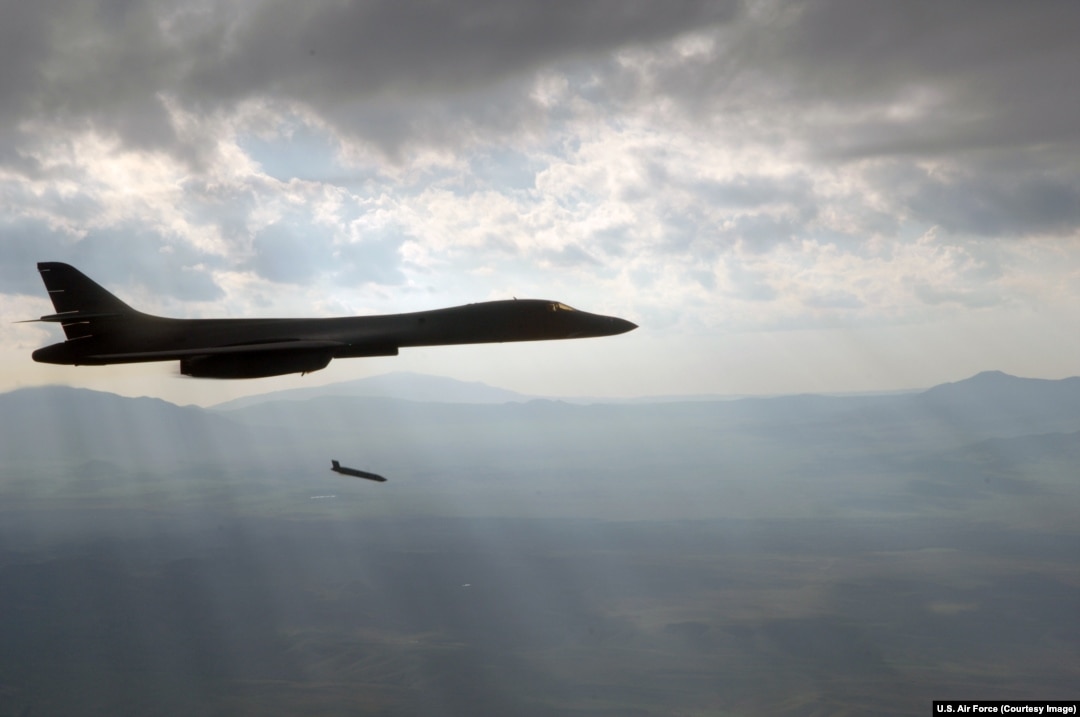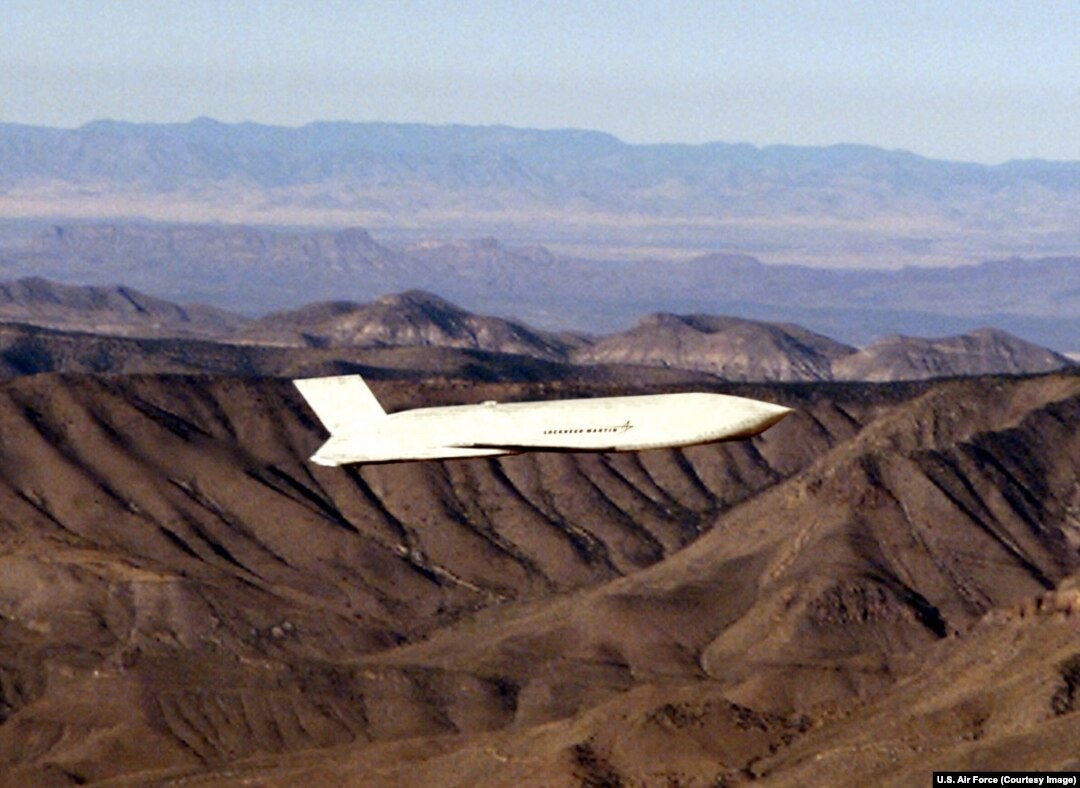What Is A JASSM, And Will The Missile Affect The Ukraine War?

This is an AGM-158 Joint Air-to-Surface Standoff Missile, commonly referred to as the JASSM.
An August 15 report claims the White House is “open” to sending shipments of the stealthy cruise missile to Ukraine. Experts that RFE/RL spoke to say if the missiles are provided they could have a significant but limited impact on the war.

A JASSM being launched from a U.S. Air Force Lancer heavy bomber during a training exercise.
Justin Bronk, a senior research fellow at the Royal United Services Institute, told RFE/RL if the air-launched missiles were to be released by Washington, they would “possibly expand Ukraine’s current capabilities to strike fixed targets like airbases, command centers, and logistics hubs throughout Crimea and the other occupied territories.”

A JASSM in flight during testing in 2010.
Bronk notes, however, that the missiles are “too expensive and scarce to be used to destroy things at a sufficient scale to make a decisive difference on the battlefield. They are an enabler and a force multiplier, not a silver bullet.” JASSM missiles are priced at around $700,000 each.
The remains of the compound of Abu Bakar al-Baghdadi in Syria seen in 2019.
The JASSM entered service in with the U.S. Air Force in 2009 and was first used in combat in 2018 in Syria. The missile's most high-profile mission came in 2019 when several JASSMs leveled the compound of slain Islamic State leader Abu Bakar al-Baghdadi.
A JASSM impacts a mock bunker during testing in 2009.
The base version of the JASSM has a range of 370 kilometers and houses a 450-kilogram warhead inside its 4.3-meter fuselage. Those specifications put the JASSM in the same class as the Anglo-French Storm Shadow missile, which has already been used by Ukraine, most notably in the 2023 strike on Russia’s Black Sea Fleet headquarters in Crimea.
A JASSM missile being loaded at a U.S. Air Force base in 2015.
Bronk says the impact of the weapons will also depend on whether Washington allowed them to be used on targets within Russia. “It's worth remembering that long-range strike weapons like cruise missiles do not win wars; they impose costs and force inefficient dispersal of logistics, command hubs, and other key assets upon an opponent.”
Ukrainian President Volodymyr Zelenskiy watches a flypast of F-16 fighter jets at an unspecified location in Ukraine on August 4.
JASSMs can be launched from F-16 fighter jets, which Ukraine now fields in its air force. The “standoff” missiles are named for their ability to be launched from out of reach of most air-defense systems.
A U.S. soldier makes final adjustments to a JASSM as it is loaded into a bomb bay.
Phillips P. O’Brien, who runs a popular Substack focused on the war in Ukraine, told RFE/RL he believes the missiles are only now entering the discussion because “JASSMs have some technologies that [the U.S.] would not want getting into the wrong hands.” He adds that “presumably that could be surmounted by just giving the Ukrainians early versions.”

